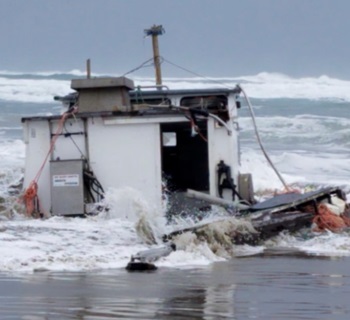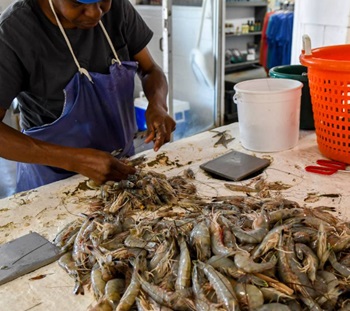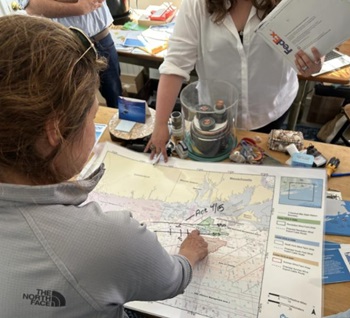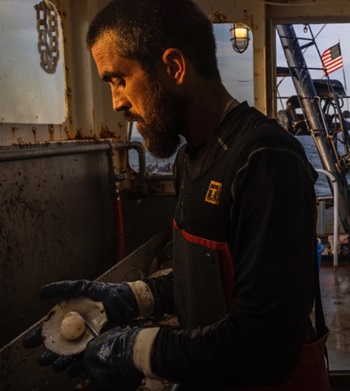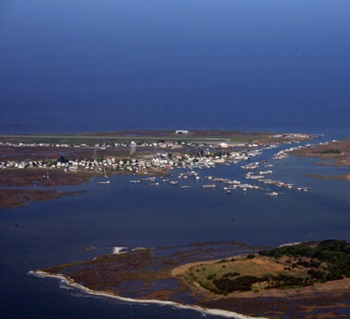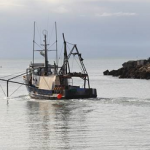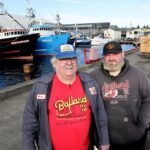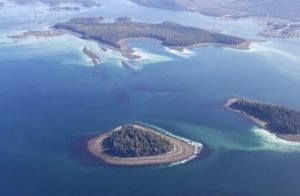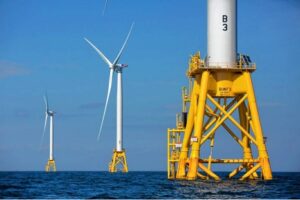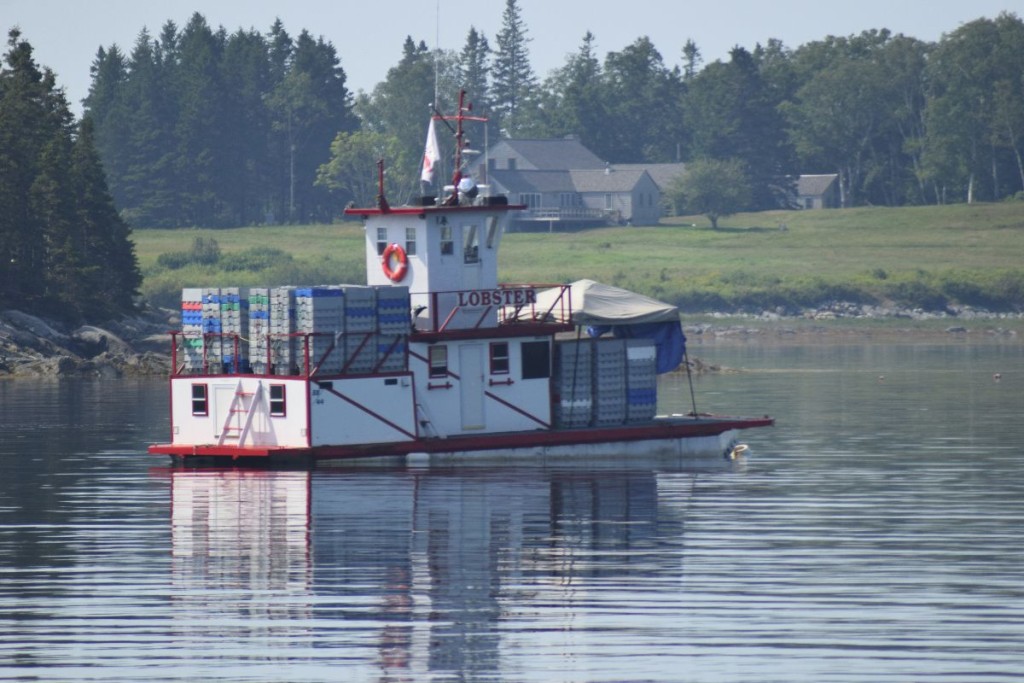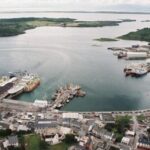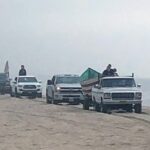It was the summer of 1978. Then-12-year-old Mike Kalaman approached the captains of two lobster boats on a pier in Westport. This was a common activity for Kalaman, whose father, a mechanic, secured him a job at a family friend’s fish market to keep him out of “trouble.” The Norwalk teen would run down to the boats tied up near the Westport market and fire away questions about the crustaceans that would be sold that day. “You want to see how this is done?” a captain finally asked him. That was the first day of Kalaman’s nearly 50-year career as a lobsterman. “You could go down to any beach anywhere in the state of Connecticut, at low tide, turn over rocks and find baby lobsters. That’s how prolific they were,” he recalls. Then came the die-off. Photos, more, >>CLICK TO READ<< 06:47
Category Archives: Mid Atlantic
Neil Gorsuch Cheers Supreme Court Placing ‘Tombstone’ on 40-Year Precedent
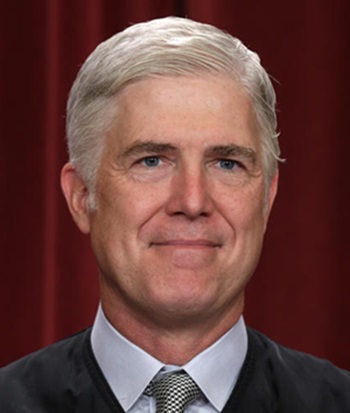 In Friday’s 6-3 ruling in Loper Bright Enterprises v. Raimondo, the justices wiped out 40 years of administrative law precedent in a move that will restrain federal agency powers. The court’s decision overturned the Chevron deference established in the 1984 case Chevron v. Natural Resources Defense Council. The majority, led by Chief Justice John Roberts and joined by the court’s other conservative justices, held that “courts may not defer to an agency interpretation of the law simply because a statute is ambiguous,” overturning Chevon deference. The court’s three liberal justices dissented. The majority, led by Chief Justice John Roberts and joined by the court’s other conservative justices, held that “courts may not defer to an agency interpretation of the law simply because a statute is ambiguous,” overturning Chevon deference. The court’s three liberal justices dissented. In Gorsuch’s concurring opinion, he wrote: “Today, the Court places a tombstone on Chevron no one can miss. In doing so, the Court returns judges to interpretive rules that have guided federal courts since the Nation’s founding.” more, >>CLICK TO READ<< 15:49
In Friday’s 6-3 ruling in Loper Bright Enterprises v. Raimondo, the justices wiped out 40 years of administrative law precedent in a move that will restrain federal agency powers. The court’s decision overturned the Chevron deference established in the 1984 case Chevron v. Natural Resources Defense Council. The majority, led by Chief Justice John Roberts and joined by the court’s other conservative justices, held that “courts may not defer to an agency interpretation of the law simply because a statute is ambiguous,” overturning Chevon deference. The court’s three liberal justices dissented. The majority, led by Chief Justice John Roberts and joined by the court’s other conservative justices, held that “courts may not defer to an agency interpretation of the law simply because a statute is ambiguous,” overturning Chevon deference. The court’s three liberal justices dissented. In Gorsuch’s concurring opinion, he wrote: “Today, the Court places a tombstone on Chevron no one can miss. In doing so, the Court returns judges to interpretive rules that have guided federal courts since the Nation’s founding.” more, >>CLICK TO READ<< 15:49
Athearn Marine Agency Boat of the Week: 39′ x 15.5 Novi Lobster/ Gillnetter, 375HP, John Deere 8.1 Diesel
 To review specifications, information, and 30 photos’, >click here< To see all the boats in this series, >click here< 06:59
To review specifications, information, and 30 photos’, >click here< To see all the boats in this series, >click here< 06:59
NCFA WEEKLY UPDATE for June 24, 2024
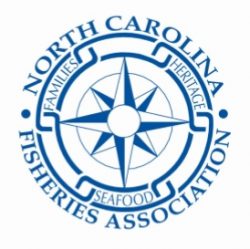 MD, VA and NC Public Hearing on Atlantic Cobia Draft Addendum II – The Atlantic States Marine Fisheries Commission (ASMFC) staff will be presenting Atlantic Cobia Draft Addendum II and having opportunity for public comment. This Draft Addendum considers recreational allocation, harvest target evaluation, and the timeline for setting management specifications. Although this may not directly apply to all readers, I think it is an interesting exercise that will apply to many more of our fisheries in the future. more, >>CLICK TO READ<< 11:19
MD, VA and NC Public Hearing on Atlantic Cobia Draft Addendum II – The Atlantic States Marine Fisheries Commission (ASMFC) staff will be presenting Atlantic Cobia Draft Addendum II and having opportunity for public comment. This Draft Addendum considers recreational allocation, harvest target evaluation, and the timeline for setting management specifications. Although this may not directly apply to all readers, I think it is an interesting exercise that will apply to many more of our fisheries in the future. more, >>CLICK TO READ<< 11:19
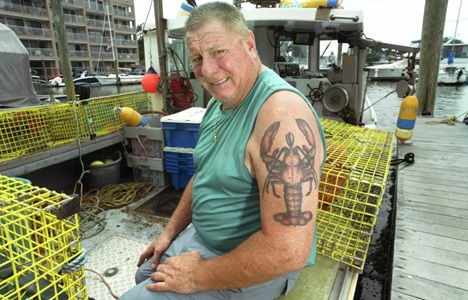
The last Connecticut lobstermen: How the LI Sound lobster die-off led to a ‘loss of identity’ for some fishermen
Highway Funds Illegally used for Floating Wind Factories
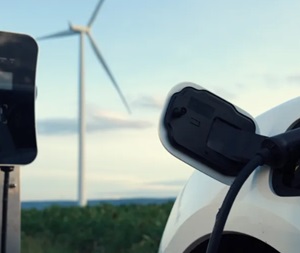 The Biden Administration is illegally redirecting hundreds of millions of dollars in highway grant money to fund construction of floating wind manufacturing facilities. The funding mechanism is the INFRA Grant Program in Biden’s Transportation Department. To begin with, here is how the website describes the Program: “What is the INFRA program? INFRA (the Nationally Significant Multimodal Freight & Highway Projects program) awards competitive grants for multimodal freight and highway projects of national or regional significance to improve the safety, efficiency, and reliability of the movement of freight and people in and across rural and urban areas.” Projects typically range from as little as $8 million up to $200 million. Here is their list of eligible projects, which is pretty clear and simple,,, more, >>CLICK TO READ<< 14:36
The Biden Administration is illegally redirecting hundreds of millions of dollars in highway grant money to fund construction of floating wind manufacturing facilities. The funding mechanism is the INFRA Grant Program in Biden’s Transportation Department. To begin with, here is how the website describes the Program: “What is the INFRA program? INFRA (the Nationally Significant Multimodal Freight & Highway Projects program) awards competitive grants for multimodal freight and highway projects of national or regional significance to improve the safety, efficiency, and reliability of the movement of freight and people in and across rural and urban areas.” Projects typically range from as little as $8 million up to $200 million. Here is their list of eligible projects, which is pretty clear and simple,,, more, >>CLICK TO READ<< 14:36
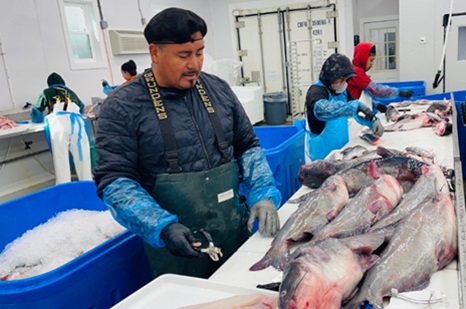
Wild-Caught Chesapeake Blue Catfish Phenomenon Booming: Thank Goodness
Buena Vista Seafood in San Francisco deals in high-end seafood from all around the world. European blue lobsters, Kambatia Reef Fish from Kenya, California Purple Urchins, and Icelandic Arctic Cod, to name a few. Now, the company has added wild-caught Chesapeake Blue Catfish to its list of offerings. “Chesapeake blue catfish check all the boxes,” says Polly Legendre,,, Legendre said the blue cats check the sustainability box because they’re an invasive species,” insanely prolific in terms of reproduction. Targeting them for harvest will help ease the toll they’re taking on the rockfish and blue crab populations, both iconic value species that have built the Chesapeake reputation. Tilghman Island Seafood’s processing capacity and dedication to quality control give their filets a long shelf life and are the reason we can get them from the East Coast to the West Coast in great condition. So they’re a sustainable and reliable fishery. more, >>CLICK TO READ<< 11:16
Why retired officer says Marine Police guarding the Chesapeake Bay are being ‘wasteful’
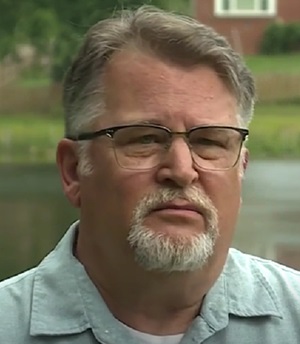 Andrew Cortez cares deeply about the Chesapeake Bay. “The Chesapeake Bay is our natural heritage,” Cortez said. “A healthy bay helps everyone.” The retired law enforcement officer was an investigator for 36 years, working to keep the Chesapeake in check with different agencies as a special agent with U.S. Fish and Wildlife. He now has concerns about the group meant to do just that: the Virginia Marine Resources Commission, which oversees Virginia Marine Police. “One of the things that really struck me is the amount of money they’re spending on what I would consider to be toys, unnecessary squandering of public money,” Cortez said. Photos, video, more, >>CLICK TO READ<< 07:38
Andrew Cortez cares deeply about the Chesapeake Bay. “The Chesapeake Bay is our natural heritage,” Cortez said. “A healthy bay helps everyone.” The retired law enforcement officer was an investigator for 36 years, working to keep the Chesapeake in check with different agencies as a special agent with U.S. Fish and Wildlife. He now has concerns about the group meant to do just that: the Virginia Marine Resources Commission, which oversees Virginia Marine Police. “One of the things that really struck me is the amount of money they’re spending on what I would consider to be toys, unnecessary squandering of public money,” Cortez said. Photos, video, more, >>CLICK TO READ<< 07:38
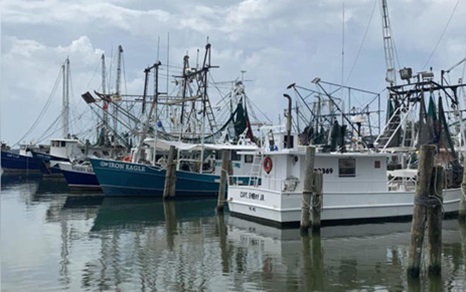
Seafood industry groups unite to oppose bill that would limit bottom trawls
A bill introduced last month in the U.S. House of Representatives that could place limits on trawling by fishermen and shrimpers is drawing the fire of seafood industry groups from Alaska to Florida. House Resolution 8507, the Bottom Trawl Clarity Act, would require the nation’s eight regional Fisheries Management councils, some of which allow fishing trawls to scrape the bottom, to define the terms “substantial” versus “limited” contact of the bottom. The bill is authored by U.S. Rep. Mary Peltola, D-Alaska, who said in a summary of the legislation that “limiting the areas where bottom trawling is allowed will help enhance marine health, diversity, and resilience, strengthening the ocean ecosystem that Alaska fishermen depend on.” more, >>CLICK TO READ<< 16:15
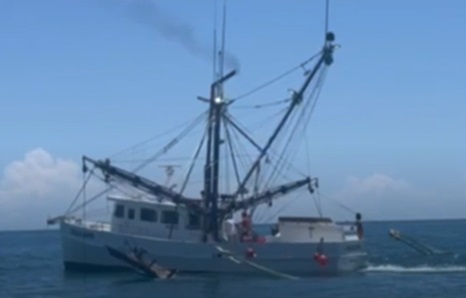
North Carolina: Debates over ending inshore trawling to protect marine life
For commercial fishermen like Thomas Smith, who works in the Pamlico Sound, shrimp trawling is essential for their livelihood. “Most of our income comes between July and November while working on inshore waters,” says Smith. He said that keeping shrimp trawling operations only in the ocean would only be viable for about two months each year, potentially devastating his business. “It would put me out of business,” he adds. Tim Gestwicki, CEO of the NCWF, supports ocean shrimp trawling but insists that inshore trawling must be stopped to protect juvenile fish species, such as the Southern flounder. “It’s time for us to catch up with the times and quit squandering our resources unnecessarily,” said Gestwicki. Video, more, >>CLICK TO READ<< 09:37
Athearn Marine Agency Boat of the Week: 34′ South Shore Lobster/Tuna Boat, John Deere 6081
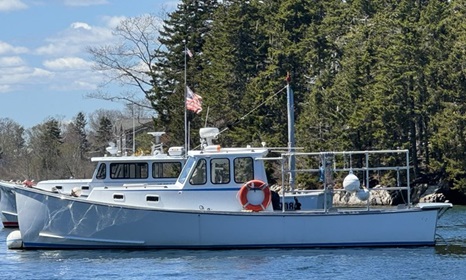 To review specifications, information, and 7 photos’, >click here<, To see all the boats in this series, >click here< 07:45
To review specifications, information, and 7 photos’, >click here<, To see all the boats in this series, >click here< 07:45
Inside the Slimy, Smelly, Secretive World of Glass-Eel Fishing
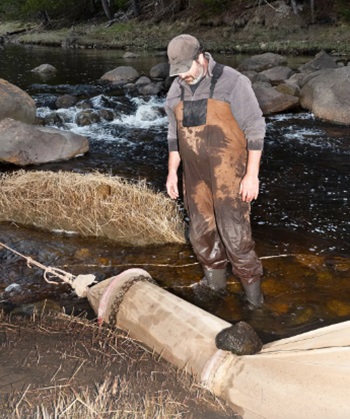 The Sargasso Sea, a warm, calm expanse of the North Atlantic Ocean, is bordered not by land but by four strong currents—a gyre. Vast mats of prickly brown seaweed float so thickly on the windless surface that Christopher Columbus worried about his ships getting stuck. The biodiverse sanctuary within and beneath the sargassum produces Anguilla rostrata, the American eel. Each female lays some eight million eggs. The eggs hatch as ribbonlike larvae that drift to the Gulf Stream, which carries them to the continental shelf. By the time they reach Maine, the larvae have transformed into swimmers about the length of an index finger, with the circumference of a bean sprout and the translucence of a jellyfish. Hence their nickname, glass eels, also known as elvers. The glass eel is barely visible, but for a dark stripe—its developing backbone—and a couple of chia seeds for eyes. “Ghosts on the water,” a Maine fisherman once called them. Travelling almost as one, like a swarm or a murmuration, glass eels enter tidal rivers and push upstream, pursuing the scent of freshwater until, ideally, they reach a pond and commence a long, tranquil life of bottom-feeding. more, >>CLICK TO READ<< 10:50
The Sargasso Sea, a warm, calm expanse of the North Atlantic Ocean, is bordered not by land but by four strong currents—a gyre. Vast mats of prickly brown seaweed float so thickly on the windless surface that Christopher Columbus worried about his ships getting stuck. The biodiverse sanctuary within and beneath the sargassum produces Anguilla rostrata, the American eel. Each female lays some eight million eggs. The eggs hatch as ribbonlike larvae that drift to the Gulf Stream, which carries them to the continental shelf. By the time they reach Maine, the larvae have transformed into swimmers about the length of an index finger, with the circumference of a bean sprout and the translucence of a jellyfish. Hence their nickname, glass eels, also known as elvers. The glass eel is barely visible, but for a dark stripe—its developing backbone—and a couple of chia seeds for eyes. “Ghosts on the water,” a Maine fisherman once called them. Travelling almost as one, like a swarm or a murmuration, glass eels enter tidal rivers and push upstream, pursuing the scent of freshwater until, ideally, they reach a pond and commence a long, tranquil life of bottom-feeding. more, >>CLICK TO READ<< 10:50
Conservative groups cleared to continue legal fight to protect whales from Biden-backed offshore wind farm
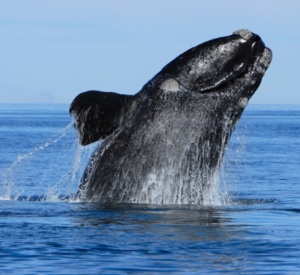 A coalition of conservative organizations have standing to continue fighting a Biden administration wind project in Virginia, a federal judge determined. However, U.S. District Judge Loren L. AliKhan of the District of Columbia, a Biden appointee, denied the plaintiff’s petition for a preliminary injunction to halt construction of the Coastal Virginia Offshore Wind project from going forward. The plaintiffs sued the Biden administration and Dominion Energy to protect the North Atlantic right whale under the Endangered Species Act. more, >>CLICK TO READ<< 08:56
A coalition of conservative organizations have standing to continue fighting a Biden administration wind project in Virginia, a federal judge determined. However, U.S. District Judge Loren L. AliKhan of the District of Columbia, a Biden appointee, denied the plaintiff’s petition for a preliminary injunction to halt construction of the Coastal Virginia Offshore Wind project from going forward. The plaintiffs sued the Biden administration and Dominion Energy to protect the North Atlantic right whale under the Endangered Species Act. more, >>CLICK TO READ<< 08:56
Frank Lasee: Wind Turbines and Lobsters Mean Less Lobsters and Not Enough Electricity
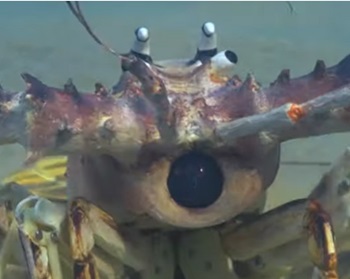 National Lobster Day is a good time to think about what the expensive, subsidized offshore wind development is going to do to lobsters and the $400 million lobster industry. Offshore wind will disrupt fishing for them and harm their habitat. This is not good for the Maine lobsters, and it is not good for electric affordability either. The 30 gigawatts (GW) of offshore wind ordered by President Joe Biden–not Congress–is catering to the far left of the Democrat Party’s base. Over 2,000 wind turbines and foundations, 6,800 miles of cable and hundreds of specialist vessels are needed to deploy 30 GW, according to the Department of Energy. The offshore wind industry spent $2.7 billion in supply chain, transmission, ports and boats in the first year of operation. Their costs have only begun. Electricity rates are going up wherever they add offshore wind electricity generation. more, >>CLICK TO READ<< 10:30
National Lobster Day is a good time to think about what the expensive, subsidized offshore wind development is going to do to lobsters and the $400 million lobster industry. Offshore wind will disrupt fishing for them and harm their habitat. This is not good for the Maine lobsters, and it is not good for electric affordability either. The 30 gigawatts (GW) of offshore wind ordered by President Joe Biden–not Congress–is catering to the far left of the Democrat Party’s base. Over 2,000 wind turbines and foundations, 6,800 miles of cable and hundreds of specialist vessels are needed to deploy 30 GW, according to the Department of Energy. The offshore wind industry spent $2.7 billion in supply chain, transmission, ports and boats in the first year of operation. Their costs have only begun. Electricity rates are going up wherever they add offshore wind electricity generation. more, >>CLICK TO READ<< 10:30
Biden’s Policies Threaten Small Lobster Fishers and Right Whales
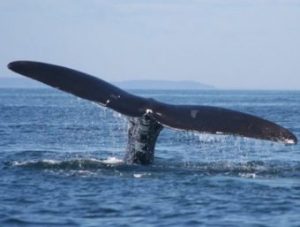 While lobstermen likely haven’t been contributing to NARW deaths, it is undisputed that vessel strikes, both in U.S. and foreign waters, have. Which brings us to the Biden administration’s decision to construct thousands of offshore wind turbines smack-dab in the middle of the whale’s migration route and habitat. Biden’s East Coast offshore wind initiative could qualify as an extinction level event for the North Atlantic right whale. Despite this, the Biden administration plans to build 30,000 megawatts of traditional offshore wind facilities (with structures attached to the ocean floor) in federal waters by 2030, and an additional 15,000 megawatts of floating industrial offshore wind power by 2035. more, >>CLICK TO READ<< 06:31
While lobstermen likely haven’t been contributing to NARW deaths, it is undisputed that vessel strikes, both in U.S. and foreign waters, have. Which brings us to the Biden administration’s decision to construct thousands of offshore wind turbines smack-dab in the middle of the whale’s migration route and habitat. Biden’s East Coast offshore wind initiative could qualify as an extinction level event for the North Atlantic right whale. Despite this, the Biden administration plans to build 30,000 megawatts of traditional offshore wind facilities (with structures attached to the ocean floor) in federal waters by 2030, and an additional 15,000 megawatts of floating industrial offshore wind power by 2035. more, >>CLICK TO READ<< 06:31
Editor’s Log: Mitigate This! by Jim Hutchinson, Jr.
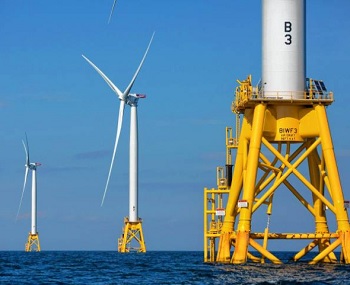 Last month I received notification from the Mid-Atlantic Fishery Management Council (MAFMC) of a fisheries compensation fund deadline for financial losses stemming from construction of the Vineyard Wind 1 offshore wind farm about 13 nautical miles south of Martha’s Vineyard and Nantucket, MA. MAFMC clearly recognizes that the construction of a large-scale offshore wind site like Vineyard Wind 1 will result in “financial losses” in the fishing community, yet the only members of the fishing industry eligible to receive compensation apparently are “commercial fishing vessel owners/operators.” Sounds like anglers should keep any eye out while watching late-night television for the best personal injury lawyer able to secure the future compensation we deserve! “The Program was created to provide compensation to commercial fishing vessels/operators for economic losses attributable to construction, operation, and decommissioning activities of Vineyard Wind 1,” the MAFMC notice stated. more, >>CLICK TO READ<< 08:30
Last month I received notification from the Mid-Atlantic Fishery Management Council (MAFMC) of a fisheries compensation fund deadline for financial losses stemming from construction of the Vineyard Wind 1 offshore wind farm about 13 nautical miles south of Martha’s Vineyard and Nantucket, MA. MAFMC clearly recognizes that the construction of a large-scale offshore wind site like Vineyard Wind 1 will result in “financial losses” in the fishing community, yet the only members of the fishing industry eligible to receive compensation apparently are “commercial fishing vessel owners/operators.” Sounds like anglers should keep any eye out while watching late-night television for the best personal injury lawyer able to secure the future compensation we deserve! “The Program was created to provide compensation to commercial fishing vessels/operators for economic losses attributable to construction, operation, and decommissioning activities of Vineyard Wind 1,” the MAFMC notice stated. more, >>CLICK TO READ<< 08:30
Athearn Marine Agency Boat of the Week: 36′ Wayne Beal Gillnetter/Lobster Boat
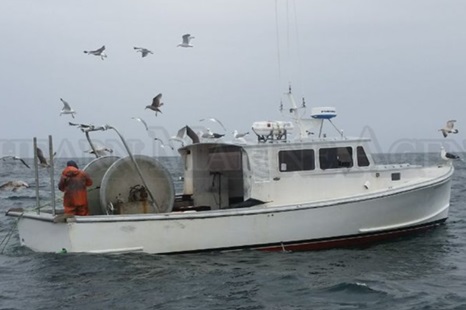 To review specifications, information, and 10 photos’, >click here<, To see all the boats in this series, >click here< 06:07
To review specifications, information, and 10 photos’, >click here<, To see all the boats in this series, >click here< 06:07
Fire Dept. Honored On 5th Anniversary of Saving Historic Workboat from Flames
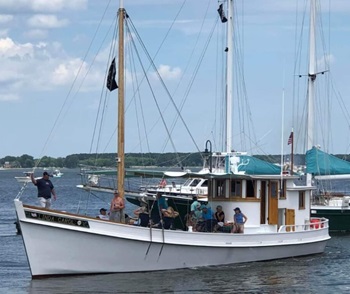 It is nearly five years to the day after a waterfront fire threatened to destroy a beloved 1931 workboat. Thanks to the hard work of local firefighters, the deck boat is still around. Those firefighters were honored last weekend for their role in saving history. The York County and City of Poquoson fire departments were recognized at the Yorktown Workboat Races for their remarkable effort on June 12, 2019 in saving the 55’ deck boat Linda Carol from fire. The Linda Carol was moored beside the Surf Rider Restaurant in Poquoson when the restaurant caught fire and was totally destroyed. Surrounded by raging smoke and flames, firefighters working from boats and shore kept the fire from spreading to the Linda Carol and other vessels by constantly spraying water on the boats. Photos, more, >>CLICK TO READ<< 08:39
It is nearly five years to the day after a waterfront fire threatened to destroy a beloved 1931 workboat. Thanks to the hard work of local firefighters, the deck boat is still around. Those firefighters were honored last weekend for their role in saving history. The York County and City of Poquoson fire departments were recognized at the Yorktown Workboat Races for their remarkable effort on June 12, 2019 in saving the 55’ deck boat Linda Carol from fire. The Linda Carol was moored beside the Surf Rider Restaurant in Poquoson when the restaurant caught fire and was totally destroyed. Surrounded by raging smoke and flames, firefighters working from boats and shore kept the fire from spreading to the Linda Carol and other vessels by constantly spraying water on the boats. Photos, more, >>CLICK TO READ<< 08:39
NCFA Weekly Update for June 10, 2024
 Mandatory Harvest Reporting, Why and How? SAFMC Meets This Week This Week. As you know, in 2023 legislation was approved that places new “mandatory reporting” requirements on both recreational anglers and commercial fishermen who participate in North Carolinas coastal fisheries. As usual, this has led to a lot of comments, complaints, and misinformation which, quite frankly, is what started the mandatory reporting conversation in the first place. As one of the primary supporters of “mandatory reporting” we feel it’s important for the NCFA to explain exactly why and how this legislation came to be. more, >>CLICK TO READ<<– 18:18
Mandatory Harvest Reporting, Why and How? SAFMC Meets This Week This Week. As you know, in 2023 legislation was approved that places new “mandatory reporting” requirements on both recreational anglers and commercial fishermen who participate in North Carolinas coastal fisheries. As usual, this has led to a lot of comments, complaints, and misinformation which, quite frankly, is what started the mandatory reporting conversation in the first place. As one of the primary supporters of “mandatory reporting” we feel it’s important for the NCFA to explain exactly why and how this legislation came to be. more, >>CLICK TO READ<<– 18:18
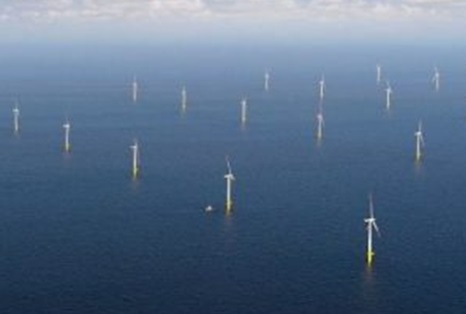
Offshore wind farm lease auction plan has Gulf of Maine fishermen feeling brushed aside
The prospect of hundreds of offshore wind turbines generating power in the Gulf of Maine is moving forward with plans to auction eight leases in a large swath of waters off the New England coast. Jerry Leeman III, the CEO of the New England Fishermen’s Stewardship Association, said there’s not enough data to support the areas that have been chosen for wind development. As now laid out, the plan could take away valuable fishing grounds from New England’s fishing fleet, pose navigational hazards and create new environmental threats, he said. “We still have more questions than we have answers,” he said. “Yet we’re moving ahead with the leasing ahead of the science.” more, >>CLICK TO READ<< 12:37
Hello Mayors: FOIA Emails Suggest US Wind Requested Coastal Towns Keep Initial Offshore Wind Talks Private
 New light is being shed on offshore wind company US Wind’s talks with the mayors comprising the Association of Coastal Towns (ACT) with the release of email correspondence between the two. US Wind and the ACT have been in talks over US Wind’s proposed offshore projects off the coast of Maryland that would potentially see a power cable landing in Delaware Seashore State Park. US Wind has also presented community benefits packages to the Coastal Towns which include proposed annual payments over twenty years worth $2 million to each town. Following a Freedom of Information Act request (FOIA) submitted to the ACT, WBOC has received copies of the emails between ACT and US Wind that suggest the offshore wind company’s desire to keep the initial discussions shielded from the public. more, >>CLICK TO READ<< 08:55
New light is being shed on offshore wind company US Wind’s talks with the mayors comprising the Association of Coastal Towns (ACT) with the release of email correspondence between the two. US Wind and the ACT have been in talks over US Wind’s proposed offshore projects off the coast of Maryland that would potentially see a power cable landing in Delaware Seashore State Park. US Wind has also presented community benefits packages to the Coastal Towns which include proposed annual payments over twenty years worth $2 million to each town. Following a Freedom of Information Act request (FOIA) submitted to the ACT, WBOC has received copies of the emails between ACT and US Wind that suggest the offshore wind company’s desire to keep the initial discussions shielded from the public. more, >>CLICK TO READ<< 08:55
Letter: No. 1 Concern Is Offshore Wind Impact on Ocean
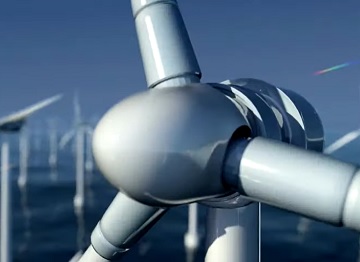 I am the fourth generation of residents, homeowners, business owners and taxpayers on Long Beach Island, as well as the granddaughter of a commercial fisherman and scalloper out of Barnegat Light. I take offense when someone says I have a case of the NIMBYs (Not In My Back Yard). This is the country’s entire coastal backyard. I am not opposed to “green” energy or for fossil fuels. I am against the destruction of our ocean. Period. The amount of resources the world receives from the ocean is immeasurable. I am not concerned with the view or real estate, tourism and the rest. Of course, all of that will be colossally impacted. My main concern is with the destruction of one of the world’s most precious resources, our ocean. more, >>CLICK TO READ<< 07:43
I am the fourth generation of residents, homeowners, business owners and taxpayers on Long Beach Island, as well as the granddaughter of a commercial fisherman and scalloper out of Barnegat Light. I take offense when someone says I have a case of the NIMBYs (Not In My Back Yard). This is the country’s entire coastal backyard. I am not opposed to “green” energy or for fossil fuels. I am against the destruction of our ocean. Period. The amount of resources the world receives from the ocean is immeasurable. I am not concerned with the view or real estate, tourism and the rest. Of course, all of that will be colossally impacted. My main concern is with the destruction of one of the world’s most precious resources, our ocean. more, >>CLICK TO READ<< 07:43
Athearn Marine Agency Boat of the Week: 40′ X 16′ Novi Lobster/Gillnetter
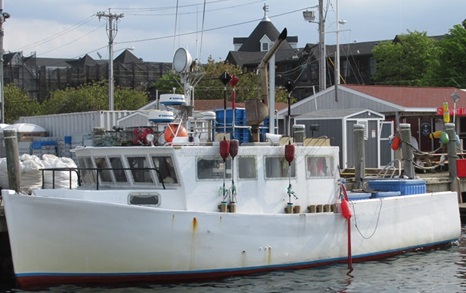 To review specifications, information, and 28 photos’, >click here<, To see all the boats in this series, >click here< 07:32
To review specifications, information, and 28 photos’, >click here<, To see all the boats in this series, >click here< 07:32
Maine Lobstermen’s Association letter to ASMFC reiterates its call to delay any gauge increase
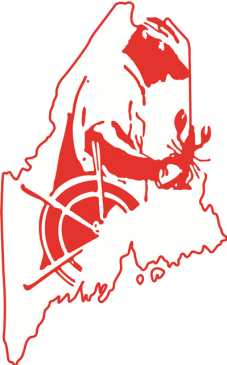 Dear Ms. Starks: The Maine Lobstermen’s Association (MLA) strongly supports the Atlantic States Marine Fisheries Commission’s (ASMFC) recommendation to NOAA Fisheries proposed in Addendum XXX “that as changes to the minimum gauge size in LCMA 1 are required by Addendum XXVII, the smallest minimum size for foreign imports would match the smallest minimum size in effect for the US industry.” MLA has raised concern with ASMFC through previous comments and letters that the lack of clarity in Addendum XXVII regarding the import of undersize lobster from Canada smaller than the minimum possession size has created significant confusion and angst amongst Maine lobstermen who worry that the import these lobsters would have a significant negative impact on the U.S. boat price. more, >>CLICK TO READ<< 14:06
Dear Ms. Starks: The Maine Lobstermen’s Association (MLA) strongly supports the Atlantic States Marine Fisheries Commission’s (ASMFC) recommendation to NOAA Fisheries proposed in Addendum XXX “that as changes to the minimum gauge size in LCMA 1 are required by Addendum XXVII, the smallest minimum size for foreign imports would match the smallest minimum size in effect for the US industry.” MLA has raised concern with ASMFC through previous comments and letters that the lack of clarity in Addendum XXVII regarding the import of undersize lobster from Canada smaller than the minimum possession size has created significant confusion and angst amongst Maine lobstermen who worry that the import these lobsters would have a significant negative impact on the U.S. boat price. more, >>CLICK TO READ<< 14:06
NCFA WEEKLY UPDATE FOR June 03, 2024
 The Mid-Atlantic Fisheries Management Council (MAFMC) meets this week in Riverhead, NY. The meeting starts Tuesday June, 4th and goes through Thursday June, 6th. Meeting Webpage, Agenda, Combined Briefing Book, Join Meeting on Webex. Public comments on agenda items will be allowed during appropriate times of the meeting and general comments will be taken the last day of the meeting. more, >>CLICK TO READ<< 09:31
The Mid-Atlantic Fisheries Management Council (MAFMC) meets this week in Riverhead, NY. The meeting starts Tuesday June, 4th and goes through Thursday June, 6th. Meeting Webpage, Agenda, Combined Briefing Book, Join Meeting on Webex. Public comments on agenda items will be allowed during appropriate times of the meeting and general comments will be taken the last day of the meeting. more, >>CLICK TO READ<< 09:31






